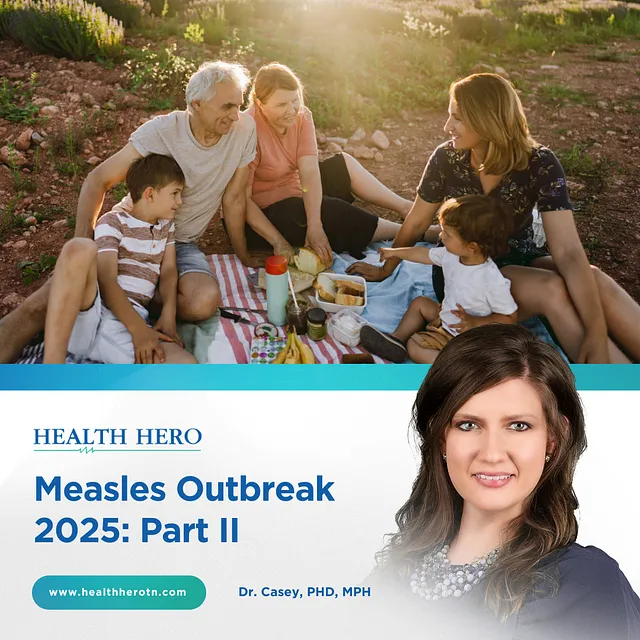We discuss them all the time but rarely hear about vaccines’ overall impact on our society. From seasonal influenza to measles, vaccines have long been recognized as one of the most effective public health strategies for preventing diseases that profoundly impact our communities. Preventing the spread of life-threatening illnesses starts in childhood, and significant progress in this area began in the late 1800s. Thanks to vaccines, millions of children have been protected from potentially deadly diseases and can even fend off common illnesses like the flu.
A recent report from the Centers for Disease Control and Prevention highlights the enormous impact of routine childhood vaccinations in the U.S. between 1994 and 2023. During this period, vaccines prevented approximately 508 million cases of illness, 32 million hospitalizations, and 1,129,000 deaths. The report states that the cumulative number of illnesses prevented ranged from 5,000 for tetanus to approximately 100 million for measles and varicella. The highest estimated cumulative number of hospitalizations and deaths prevented were 13.2 million hospitalizations for measles vaccination and 752,800 deaths for diphtheria vaccination.
These numbers highlight the significant impact of vaccines. For example, recent models assessing the effectiveness of the recently approved vaccine for COVID-19 illustrate their success. Researchers used mathematical models to evaluate the global impact of COVID-19 vaccination programs. They considered factors such as COVID-19 transmission rates, vaccination coverage, reported mortality from COVID-19, and all-cause excess mortality across 185 countries and territories.
The findings indicate that based on reported COVID-19 deaths, COVID-19 vaccines are estimated to have prevented about 14.4 million deaths in just one year. When accounting for excess deaths — a broader measure of pandemic-related mortality — this estimate rises to 19.8 million lives saved. This represents a 63% reduction in total deaths during the first year of the vaccination campaign.
Vaccine Hesitancy
Despite the success of vaccines, several hurdles remain in the way, especially following the COVID-19 pandemic. When individuals or communities are reluctant or refuse to vaccinate, the immunity that prevents outbreaks begins to weaken. Diseases once considered eradicated or under control, such as measles or polio, can resurface as vaccination rates decline. For instance, measles — once declared eradicated in many regions — has resurgent in areas where vaccination rates have dropped. Measles cases in 2024 are the highest since 2019 in the United States. This can increase as children get ready to return to school next month. A resurgence like this not only risks the health of those who are unvaccinated but is also a major risk to vulnerable populations who cannot receive vaccines due to medical reasons.
How to be Prepared Before Going Back to School
As kids start to look for new school supplies, parents and guardians should check their children’s vaccine schedules to ensure they are up to date. Below is a general vaccine schedule for U.S. children and adolescents preparing to return to school. Remember that individual needs can vary, so it’s always best to consult a healthcare provider for personalized recommendations.
Vaccine Schedule for School-aged Children (Pre-K through 12th Grade)
For Preschoolers (Pre-K)
DTaP (Diphtheria, Tetanus, Pertussis):
○ 5 doses: 2, 4, 6 months; 15–18 months; 4–6 years
IPV (Inactivated Poliovirus):
○ 4 doses: 2, 4, 6–18 months; 4–6 years
MMR (Measles, Mumps, Rubella):
○ 2 doses: 12–15 months; 4–6 years
Varicella (Chickenpox):
○ 2 doses: 12–15 months; 4–6 years
Hib (Haemophilus influenzae type b):
○ 3–4 doses, depending on the brand: 2, 4, 6 months; 12–15 months
Hepatitis B:
○ 3 doses: Birth, 1–2 months, 6–18 months
Pneumococcal (PCV13):
○ 4 doses: 2, 4, 6 months; 12–15 months
Hepatitis A:
○ 2 doses: 12–23 months (second dose 6–18 months after the first)
For Elementary School Children (Grades K-5)
DTaP (Diphtheria, Tetanus, Pertussis):
○ Ensure completion of the series (5 doses by age 6)
IPV (Inactivated Poliovirus):
○ Ensure completion of the series (4 doses by age 6)
MMR (Measles, Mumps, Rubella):
○ Ensure 2 doses are completed
Varicella (Chickenpox):
○ Ensure 2 doses are completed
Tdap (Tetanus, Diphtheria, Pertussis):
○ 1 dose: 11–12 years
HPV (Human Papillomavirus):
○ 2–3 doses depending on age at first dose: Start at 11–12 years
Meningococcal (MenACWY):
○ 1 dose: 11–12 years
Flu Vaccine:
○ Annual vaccination, recommended before the flu season starts
For Middle and High School Students (Grades 6–12)
DTaP (Tetanus, Diphtheria, Pertussis):
○ 1 dose: 11–12 years
HPV (Human Papillomavirus):
○ 2–3 doses depending on age at first dose: Start at 11–12 years
Meningococcal (MenACWY):
○ 1 dose: 11–12 years
○ Booster dose: 16 years
Flu Vaccine:
○ Annual vaccination, recommended before the flu season starts
COVID-19 Vaccine:
○ Follow current CDC recommendations, which may include booster doses based on age and previous doses.
It’s important to remember that individual needs vary, so it’s always best to consult a healthcare provider for personalized recommendations.
Sources
National Library of Medicine: Lives saved by COVID‐19 vaccines


